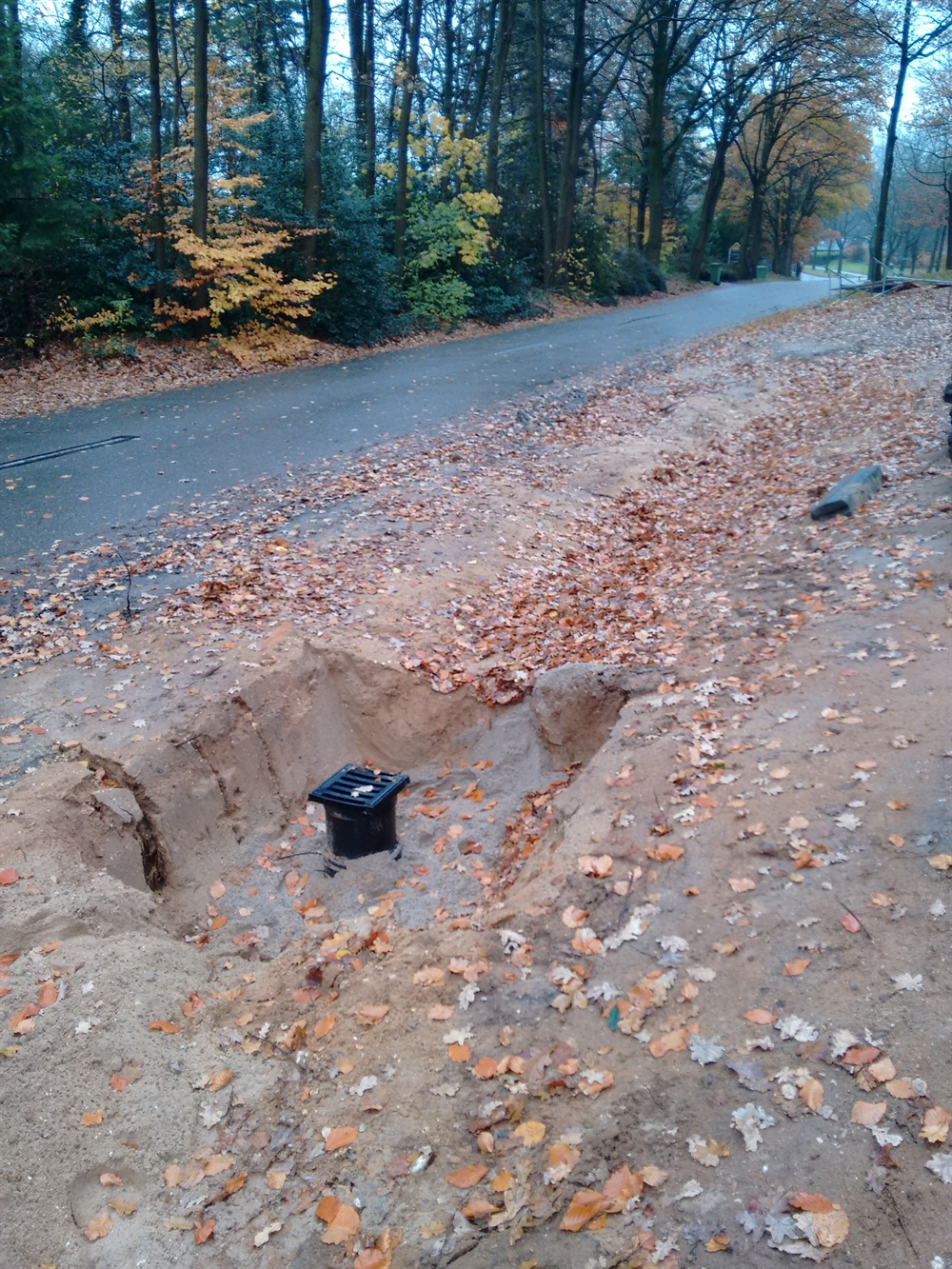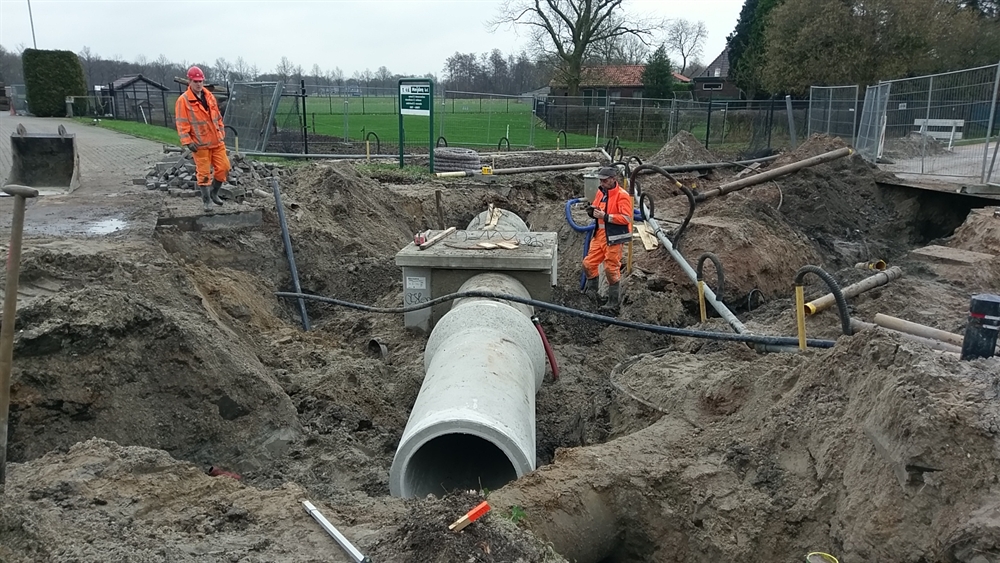Tackling waterlogging in the Rhenen residential areas
In recent years, all the residential areas of the municipality of Rhenen have been faced with waterlogging. Severe downpours have inundated houses, farmland, and gardens. Rhenen’s hilly landscape poses an additional challenge in terms of the storage or proper drainage of rainwater run-off. In order to prevent the negative impact of future severe downpours and thus be better prepared for climate change, the municipality, residents, the province of Utrecht, and the district water board have taken collective action.
Rhenen-Noord and Achterberg
With respect to the Rhenen-Noord and Achterberg regions, the Vallei en Veluwe district water board (WVV) is focusing on the improvement of water drainage. The municipality of Rhenen is focusing on rainwater storage, the disconnection of downspouts, and rainwater infiltration. In order to minimise waterlogging, WVV and the municipality have studied rainwater run-off during heavy downpours and how this run-off impacts the sewer system and the drainage canals.
Among other things, the analysis has demonstrated that a substantial volume of water runs off the hill towards Achterberg, via streets such as the Achterbergsestraatweg and the Bergweg. In order to reduce this run-off, the municipality has taken the following measures:
- In various districts (on top of the hill), downspouts have been disconnected from the sewer system;
- Water conductors, deep infiltration wells, and wadis have been constructed along the Bergweg;
- The streets have been repaved.

The district water board has expanded nearly all the culverts running underneath roads or driveways that connect the drainage canals. Furthermore, an additional primary drainage canal has been constructed in order to improve drainage towards the valley canal.

The analysis has shown that the prevention of waterlogging issues required a combination of several measures and that input from and collaboration with residents was essential. Residents have weighed in, provided input (local know-how), and collaborated by making space available for the implementation of measures.
Rhenen and Elst
The severe downpours in recent years have caused waterlogging in several residential areas in the municipality of Rhenen. With respect to the residential areas of Rhenen and Elst (governed by the Stichtse Rijnlanden district water control board), several studies have been conducted, and measures have been set down in collaboration with local residents.
A stress test has been conducted for the Elst residential area. This has shown that, in addition to the disconnection of downspouts and rainwater infiltration, green measures will also offer solutions.
The Grebbekwartier district in Rhenen has been facing severe waterlogging. In collaboration with the province of Utrecht, the municipality has taken measures to store and drain rainwater run-off:
- A large water storage facility has been created underneath the elevated car park of Ouwehands Zoo;
- Streets have been repaved;
- One-way valves have been installed;
- Infiltration grids have been installed.
Collaboration
The municipality of Rhenen has engaged in close collaboration with the Vallei en Veluwe district water board, the Stichtse Rijnlanden district water control board, and the Platform Water Vallei en Eem collaborative with a view to embed spatial adaptation within the municipality.
Contact persons
Sandra Reuling
Gmeente Rhenen
Sandra.reuling@rhenen.nl
0317 681667
André van Uum
Waterschap Vallei en Veluwe
AvanUum@Vallei-Veluwe.nl
055 5272911
